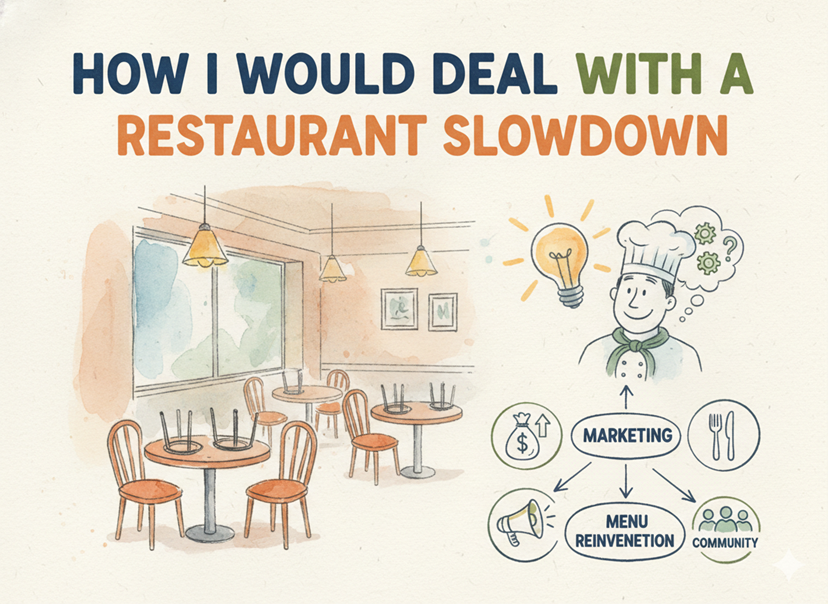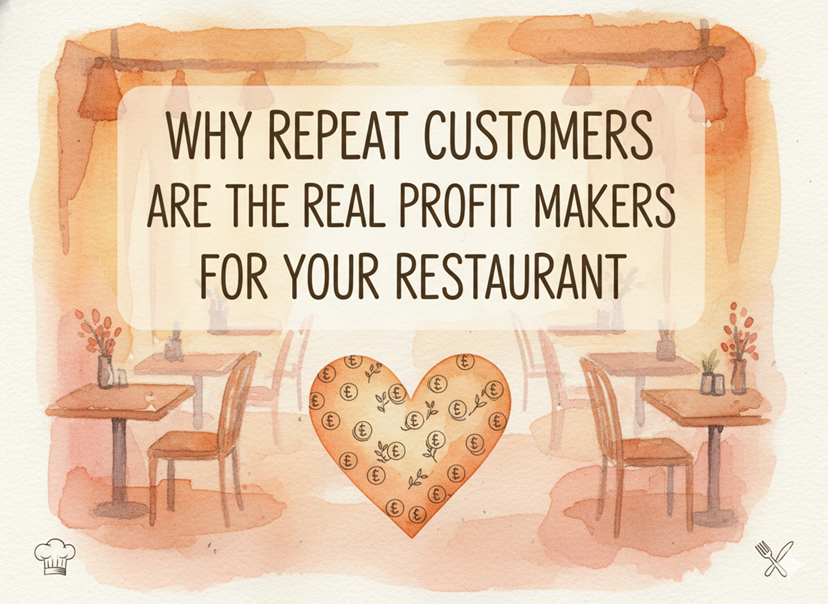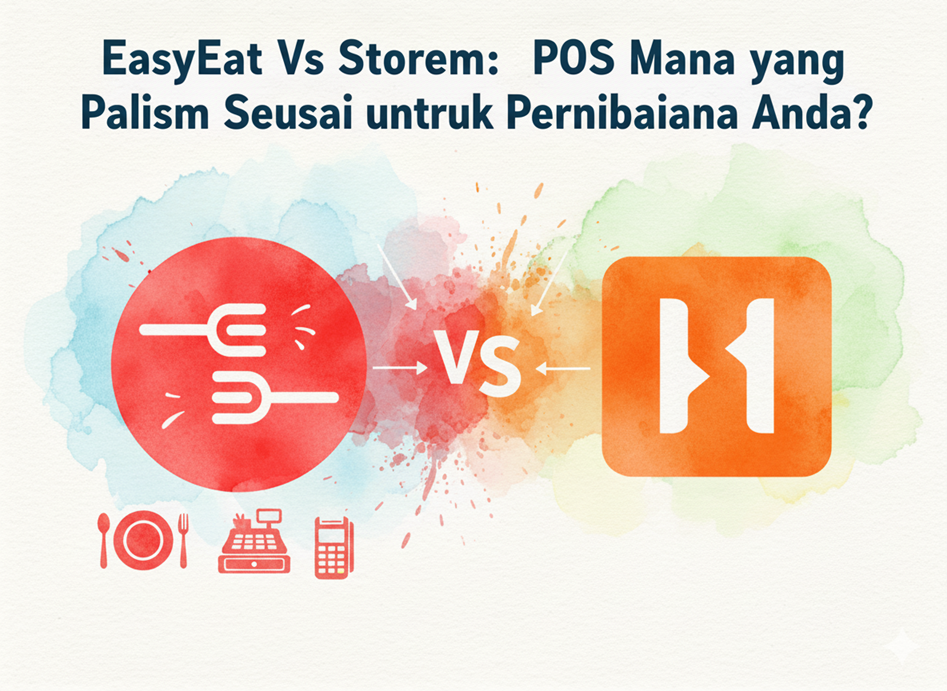Food allergies are more common than you think. Over 260 million people worldwide suffer from food allergies, and this number keeps growing. In Malaysia, the National Pharmaceutical Regulatory Agency (NPRA) states that food allergen labelling is mandatory for packaged foods, but what about your menu? If you serve food, you need to pay attention to allergen labelling to protect your customers and build trust.
This blog will help you understand how to label allergens correctly, prepare allergen-free dishes safely, and handle special requests without stress. Plus, we’ll show you how EasyEat’s table service feature makes it easier for you to manage these requests smoothly.
Why Food Allergen Labelling Matters
When someone with a food allergy eats something they shouldn’t, it can lead to serious reactions, sometimes even life-threatening ones. Around 10% of people have a food allergy, and many more have intolerances. If you clearly label allergens in your menu, you help customers make safe choices.
In Malaysia, the Food Regulations 1985 require declared allergens to be listed on packaged foods. While restaurants don’t have the same strict rules, being transparent can prevent accidents and show customers you care.
The 14 Major Allergens You Must Label
Globally, 14 major allergens cause most allergic reactions. These are:
- Celery
- Cereals containing gluten (wheat, barley, oats, rye)
- Crustaceans (prawns, crabs, lobsters)
- Eggs
- Fish
- Lupin
- Milk
- Molluscs (clams, mussels, oysters)
- Mustard
- Peanuts
- Sesame
- Soybeans
- Sulphur dioxide (found in dried fruits, wine)
- Tree nuts (almonds, cashews, walnuts)
If your dishes contain any of these, you should mention them clearly on your menu.
How to Label Allergens in Your Menu
Use Clear and Consistent Symbols
One of the easiest ways to label allergens is by using symbols. A small icon next to each dish helps customers quickly identify what they need to avoid. For example, a fish symbol can indicate seafood, while a nut symbol can highlight dishes containing peanuts or tree nuts. You can create a simple legend at the bottom of your menu explaining what each symbol means. This method is especially helpful for customers who may not read every description carefully. The key is to keep the symbols consistent across all your menus—whether they are printed, digital, or displayed on a board.
Include Allergens in Dish Descriptions
Another straightforward method is to list allergens directly in the dish description. For example, instead of just writing “Chicken Satay,” you can write “Chicken Satay (contains peanuts).” This way, customers see the warning right away without having to search for a separate list. Be as specific as possible—instead of saying “may contain traces of nuts,” say “contains peanuts” if the dish has them. This clarity builds trust and helps customers make informed choices. If a dish has multiple allergens, list them all. For example, “Cheesecake (contains gluten, milk, eggs).”
Provide a Separate Allergen Guide
Some customers prefer a detailed breakdown of allergens in every dish. You can create a separate allergen guide—either as a printed sheet, a digital PDF, or a section on your website. This guide should list every dish on your menu along with the allergens it contains. Some restaurants even use a matrix format, with dishes on one side and allergens on the other, with checkmarks indicating which allergens are present. This is especially useful for customers with multiple allergies who need to cross-check ingredients. If you update your menu, make sure to update the allergen guide too.
Train Your Staff Thoroughly
No matter how well you label allergens, your staff must understand them too. Servers, chefs, and even kitchen helpers should know which dishes contain common allergens. Train them to recognize allergy-related questions and respond correctly, never guess—if they’re unsure, they should check with the kitchen, communicate clearly with the chef when a customer has an allergy request, understand cross-contamination risks, and how to prevent them.
Regular training sessions help keep everyone updated, especially when you introduce new dishes. Role-playing common scenarios, like a customer asking for gluten-free options, can make your team more confident in handling real situations.
Use Digital Menus for Easy Updates
If you use QR code menus or a digital ordering system, updating allergen information becomes much easier. You can instantly add or remove allergen warnings without reprinting menus. Digital menus also allow customers to filter dishes based on their allergies. For example, someone with a dairy allergy can select “dairy-free” and only see safe options. This reduces confusion and makes the ordering process smoother for customers with dietary restrictions.
Highlight Allergen-Free Options
If you have dishes that are naturally free from common allergens, highlight them. For example, you can add a small section on your menu called “Gluten-Free Choices” or “Nut-Free Dishes.” This makes it easier for customers to find safe options quickly. You can also use tags like “Vegan (No Dairy, No Eggs)” to show that certain dishes avoid multiple allergens. The more visible these options are, the more comfortable customers will feel dining at your place.
Display Allergen Warnings for Shared Cooking Equipment
If certain dishes are prepared in shared fryers or grills where allergens like peanuts or gluten are present, add a warning. For example, “Our fries are cooked in the same oil as seafood and nuts.” This transparency helps customers assess their risk level. Some may still choose to order, while others will avoid it entirely. Either way, they appreciate the honesty.
Make Allergen Information Visible Online
Many customers check menus online before visiting. If you have a website or social media pages, make sure allergen information is available there too. You can upload your allergen guide or add allergen tags to your digital menu. This helps customers with allergies decide whether your place is safe for them before they even walk in.
Allergen-Free Cooking Techniques
Designate Separate Cooking Tools
One of the most effective ways to prevent cross-contamination is by using dedicated tools for allergen-free cooking. This means having specific knives, cutting boards, pans, and utensils that are only used for preparing allergen-free meals. Color-coding works well—for example, using red cutting boards only for gluten-free prep or blue knives just for nut-free dishes. Store these tools separately from regular kitchen equipment, ideally in a marked area. This system helps kitchen staff immediately identify which tools to use when preparing special orders, reducing the chance of accidental mix-ups.
Implement Strict Cleaning Protocols
Allergen proteins can linger on surfaces long after cooking. A quick wipe-down isn’t enough—you need thorough cleaning with hot, soapy water and sanitizer before preparing allergen-free meals. Pay special attention to high-risk areas like grills, fryers, countertops, and food processors. For baked goods, clean mixers and baking sheets meticulously, as flour particles can stay airborne for hours. Establish a cleaning checklist that staff must complete before starting any allergen-free preparation. This extra step takes time but prevents dangerous cross-contact.
Create an Allergen-Free Cooking Zone
If possible, set up a separate area in your kitchen just for preparing allergen-free meals. This space should have its own equipment, ingredients, and cleaning supplies. When space is limited, schedule allergen-free cooking during slower periods when there’s less general food preparation happening. The zone should be marked with signs reminding staff to wash their hands and change gloves before entering. This physical separation provides the safest environment for preparing meals for customers with severe allergies.
Reconsider Shared Cooking Equipment
Shared fryers pose one of the highest cross-contamination risks. Even if you change the oil regularly, allergen proteins can remain in the fryer’s crevices. The safest approach is to have a dedicated fryer for allergen-free items, or better yet, avoid frying altogether for allergy orders. Similarly, toasters, grills, and waffle makers should either have dedicated allergen-free versions or be thoroughly cleaned with a food-safe degreaser before use. For restaurants that can’t afford separate equipment, consider alternative cooking methods like baking or steaming for allergy orders.
Revamp Your Ingredient Storage
Proper storage is crucial for preventing accidental allergen exposure. Keep allergen-free ingredients in sealed, clearly labeled containers stored above regular ingredients to prevent spills from contaminating them. Use separate shelves or storage areas for common allergens like nuts, dairy, and gluten products. Implement a “first in, first out” system to ensure older ingredients get used first, reducing the chance of someone accidentally grabbing the wrong item during busy service. The inventory management system can also help you with this. For added safety, consider using colored lids or labels to distinguish allergen-free ingredients at a glance.
Modify Cooking Techniques
Some standard cooking methods increase cross-contamination risks. Instead of tossing pasta in the same colander used for regular pasta, use a separate one for gluten-free orders. When making allergen-free sauces or soups, prepare them in clean pans rather than adding to existing batches. For grilled items, use foil packets or clean a section of the grill thoroughly before cooking. Steamers should be completely cleaned between uses, as steam can carry allergen particles. These adjustments require more effort but are essential for true allergen safety.
Standardize Allergen-Free Prep Procedures
Create written step-by-step procedures for preparing allergen-free meals that all kitchen staff must follow. This should include: handwashing with soap (not just sanitizer), changing gloves, using clean aprons, and verifying ingredients before starting. The procedure should specify which equipment to use and how to properly clean it. Having these standards in writing ensures consistency, especially when multiple cooks are involved. New staff should be trained on these procedures before handling any allergy orders.
Implement Verification Systems
Before serving an allergen-free meal, have a verification system in place. This could involve a second chef checking the order, using special allergy meal tickets, or placing an allergen-free marker on the plate. Some kitchens use colored plates or toothpicks to identify allergy orders visually. The person delivering the food should confirm it’s the correct allergen-free meal before taking it to the table. This double-check system catches potential mistakes before they reach the customer.
Source Ingredients Carefully
Not all “free-from” claims on ingredient labels are equal. Some products may say “gluten-free” but are processed in facilities that handle wheat. Work closely with suppliers to verify their manufacturing processes and ask for documentation about potential cross-contamination risks. When possible, choose ingredients that are certified allergen-free by reputable organizations. Keep records of these verifications and update them regularly, as suppliers may change their processes.
Train Staff on Hidden Allergens
Many ingredients contain hidden allergens that staff might not recognize. Soy can be in sauces, milk protein in processed meats, or nuts in unexpected places like pesto. Regular training should cover these less obvious sources. Create a reference guide of common hidden allergens in your menu items that kitchen staff can consult. This knowledge helps prevent accidental inclusion of allergens when modifying dishes for special requests.
How to Handle Allergen-Free Food Requests Using EasyEat
Managing special requests can be stressful, especially during busy hours. With EasyEat’s table service feature, customers can place orders directly through a QR code. Here’s how it helps:
Customers can add notes in the app – Instead of calling a waiter, they can type their allergy request (e.g., “No peanuts” or “Gluten-free”).
Requests go straight to the chef – The kitchen gets clear instructions, reducing mistakes.
No miscommunication – Servers don’t have to remember or relay messages, so there’s less chance of errors.
This system saves time, keeps orders accurate, and makes customers feel safer.
FAQ Section
By taking these steps, you can make your place safer and more welcoming for everyone. Happy customers come back, and word spreads fast when people know they can trust you with their allergies.
Would you like to try EasyEat’s table service feature to simplify allergen orders? Let us show you how it works!




